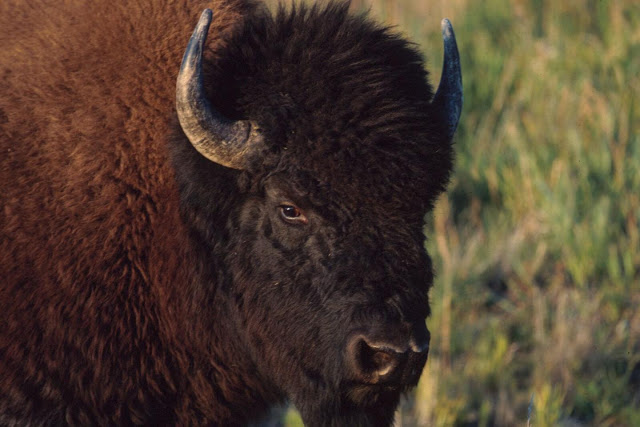

| Online: | |
| Visits: | |
| Stories: |

| Story Views | |
| Now: | |
| Last Hour: | |
| Last 24 Hours: | |
| Total: | |
Scientists Track Origin of American Bison to Common Female Ancestor Who Arrived between 130,000 to 195,000 Years Ago
Shapiro, Froese and colleagues used new techniques for ancient DNA extraction and sequenced the mitochondrial genomes of more than 40 bison, including the two oldest bison fossils ever recovered. Comparing these genomes to additional Siberian and North American bison clarifies the earliest parts of the bison family tree.
“There has long been a controversy about the timing of bison arrival in North America,” said Shapiro. Bison arrival in North America marks the beginning of what geologists call the “Rancholabrean Land Mammal Age,” which is used to discriminate between different ecological periods in the continent’s history. “Until recently, the fossil records from different parts of North America disagreed with each other, with a few fossil localities suggesting that bison arrived millions of years ago, but most old fossil sites showing no evidence of bison at all,” Shapiro said. As new methods to date fossil localities emerged, the ages of the sites in North America with purportedly very old fossil bison have all been questioned, leaving the timing of bison arrival a mystery.
“Bison used what is called the Bering Land Bridge — a vast connection of land between Asia and North America — to cross from Asia into North America. The land bridge forms during ice ages, when much of the water on the planet becomes part of growing continental glaciers, making the sea level much lower than it is today,” explained Shapiro. “After they arrived in Alaska, they spread quickly across the continent, taking advantage of the rich grassland resources that were part of the ice age ecosystem.”
While bison were not introduced by humans to North America, their rapid spread and diversification are hallmarks of an invasive species — and part of what make bison’s role in the Great Plains ecosystem so significant. “Bison arrived in North America and quickly came to dominate a grazing ecosystem that was previously reigned over by horses and mammoths for one million years,” said Shapiro.
Contacts and sources:
Alexis Morgan
University of California Santa Cruz
The paper, “Fossil and genomic evidence constrains the timing of bison arrival in North America,” was published in Proceedings of the National Academy of Sciences. http://dx.doi.org/10.1073/pnas.1601077113
Source: http://www.ineffableisland.com/2017/03/scientists-track-origin-of-american.html



